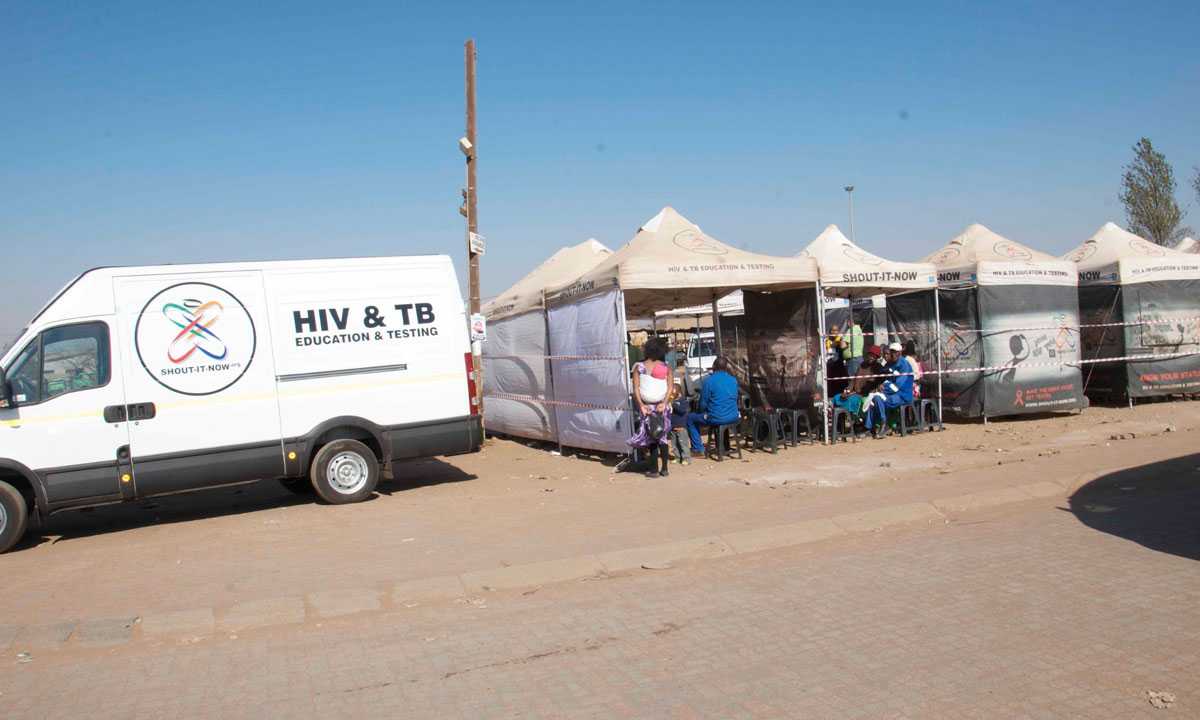Laboratory-based Surveillance and Surveys & Operational Research
Key activities Supported by the Laboratory Branch
The National TB Drug Resistance Survey (TB DRS)

The National TB Drug Resistance Survey (TB DRS) is a collaborative activity between the National Department of Health (NDoH), NHLS-Centre for Tuberculosis (CTB), and CDC-SA. The SA TB DRS is a unique survey as it takes into account all patients suspected of having TB and also, in addition to quantifying resistance to Isoniazid and Rifampicin, resistance levels to other drugs are also quantified.Objectives include:
- Determining the burden of MDR TB in SA;
- Describing the types of MDR strains circulating; and
- Determining the proportion of drug resistance amongst new vs. retreatment cases in all 9 provinces.
The survey has been designed to provide robust independent estimates of drug resistance to the provincial level. To date, enrolment of ± 170,000 TB suspected cases in 349 clusters in all 9 provinces has occurred. Data generated from this survey will be used to provide an evidence base for the adoption of new regimens.
Microbiological and Epidemiological Surveillance of TB in SA
TB is a major contributor to the burden of diseases in SA and is recognized as a health priority by the NDoH. Essential to the control of the epidemic is the ability to describe and analyze trends of the disease across the country, especially for drug resistant TB. Two components that are essential but poorly provided for in SA are microbiological and epidemiological surveillance systems. However, evidence from molecular epidemiology has highlighted that TB is very diverse in different regions of the country and insights into genotypes and the dynamics of transmission of clones is critical to monitor. The CDC-SA laboratory program, in collaboration with NHLS, has established a surveillance system to monitor cases and trends of TB drug resistance, developed a bank for isolates, and continue to characterize strains. So far, over a thousand strains have been collected, characterized, and stored in the bank and the trend analysis of TB in SA for the period 2004-2012 is complete.
Group for Enteric, Respiratory and Meningeal Diseases Surveillance in SA (GERMS-SA)
One of the pillars of monitoring infectious disease trends is through laboratory-based surveillance. GERMS-SA is a robust national laboratory-based population surveillance program for HIV-associated bacterial and fungal opportunistic infections in SA. The main objective of this program is to provide information regarding trends in the burden of HIV-associated opportunistic infections, which in turn can provide an indirect measure of the impact of the HIV epidemic in SA, as well as the public health interventions to mitigate this impact. Organisms and diseases under surveillance are within the public health communicable disease aspects of the NDoH’s priority commitments. These include:
- HIV,AIDS, and TB: epidemiology of rifampicin-resistant TB, cryptococcal meningitis, invasive pneumococcal disease, non-typhoidal salmonellosis;
- Child mortality reduction: contribute to the collection of information related to vaccine-preventable diseases (invasive pneumococcal disease and Haemophilus influenzae); pneumonia and diarrhoeal diseases, including food and water-borne diseases; and
- Hospital services: improve quality of care in hospitals through aiding to reduce hospital-acquired infections (candidaemia, Staphylococcus aureus and Klebsiella spp).
The GERMS platform receives case reports and isolates from about 200 microbiology laboratories and report approximately 18,000 OI cases annually. Additionally, GERMS has significantly contributed to the development of clinical guidelines for pneumonia, meningococcal disease, cholera, cryptococcosis, as well as typhoid fever, and to the introduction of pneumococcal conjugate vaccine, including the booster dose for Haemophilus influenzae type b (Hib) vaccine into the Expanded Programme on Immunization (EPI). Key to any surveillance activity is the dissemination of information, which the GERMS platform does through reports published in the National Institute for Communicable Diseases (NICD) - a division of the NHLS - communicable diseases surveillance quarterly bulletin, as well as through the publication of annual reports.
GeneXpert Implementation, Research, and Development Support
In an effort to improve the diagnosis of Mycobacterium TB (MTB) disease and reduce the burden of disease, the SA government, through the NHLS National Priority Programs (NPP), committed to the implementation of the GeneXpert technology. A national phased implementation of the technology was instituted and to date, 100% coverage of all NHLS targeted laboratories has been achieved. CDC-SA, in partnership with other key stakeholders, supported the roll out and implementation of the GeneXpert technology. In addition, support for laboratory and clinical training, development of laboratory information systems, as well as quality systems for instrument verification, and external quality assessment (EQA) was also provided.
- Page last reviewed: February 17, 2015
- Page last updated: February 17, 2015
- Content source:
Global Health
Notice: Linking to a non-federal site does not constitute an endorsement by HHS, CDC or any of its employees of the sponsors or the information and products presented on the site.


 ShareCompartir
ShareCompartir